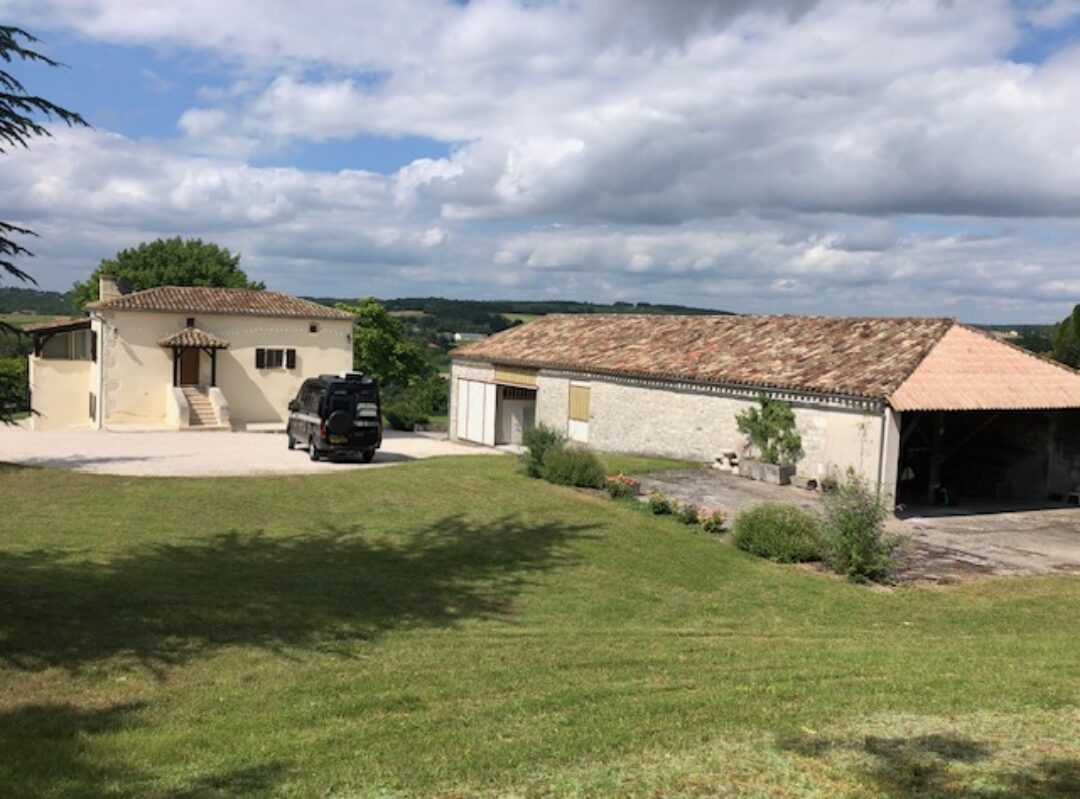As usual we’ve been exploring the areas surrounding our campsite base, so we set off on the motorbike to the area west and south of Confolens. The landscape remains very similar – agricultural with small villages dotted about. We headed first for Ruffec which is a larger town on the Charente river. The centre of town was focused around the Mairie and the market halls but otherwise we found the architecture and layout of the town a bit uninspiring. They had taken the trouble though to cover a town centre utility point with some nice artwork.
Looking for a spot for our picnic lunch we moved on a couple of miles to the riverside village of Verteuil-sur-Charente and we probably couldn’t have found a more scenic location. The village is dominated by the rather fairytale looking Château de Verteuil with a picturesque water mill just below its walls. The village dates back to the Middle Ages and the castle was in the ownership of the De la Rochefoucauld family for over a thousand years, although it was sold last year due to difficulties with passing it to multiple heirs under France’s inheritance laws. During the 100 Years War the castle was in English possession for a number of years. Certainly one of the prettiest locations we’ve seen in this region and the only château (much to Joe’s relief who had previously declared himself ‘château-ed out’ or would that be châteaurred!).


Back on the bike and we continued the circular tour southwards to the small town of Chasseneuil sur Bonnieure, the location of a national memorial to the French Résistance fighters. During WW2 the line of demarcation denoting occupied France (zone occupée) and France under Vichy administration (zone libre) ran through the Charente region. The Charente-Limousine region was on the Vichy administered side and the town of Chasseneuil was one of the ‘border’ towns also in the ‘zone libre’. As a result of being cut in two the region saw a large amount of resistance activity and the ‘maquis’ or group of resistance fighters called Bir-Hacheim was established in the forests around Chasseneuil. Following the war, Colonel Chabanne, who was one of the local resistance fighters decided to erect a memorial on a piece of land donated by the Mayor of Chasseneuil and his son, co-founder of the maquis. There is no signage to the site but it is easily spotted on the hillside on the edge of town.

As well as the huge memorial, the site includes the national necropolis with a crypt where most of the Resistance leaders of the region are buried. In the grounds surrounding the memorial, stone crosses mark the graves of WW2 soldiers, resistance fighters and 3 WW1 soldiers, including 226 empty graves simply marked ‘In Memoriam’.
The memorial itself is massive at 21 metres high and almost looks like something from the Soviet era. It encompasses the ‘V’ for Victory and the Cross of Lorraine as well as carved reliefs around the base depicting the roles of the resistance fighters. A really interesting site, where we were the only visitors again, and a day of contrasts.







So very interesting Claire and beautifully described. Poor Joe and the chateaux – but I know what he means. – although this one was beautiful.
Looks as though the weather is still being kind to you.
Love from us both xx P. S. there’s only one S in focused! 😂😂🥰
Love the street art. Really interesting history.
Thanks Maureen. We’ve seen other utility type buildings covered with art but that has been one of the best. x